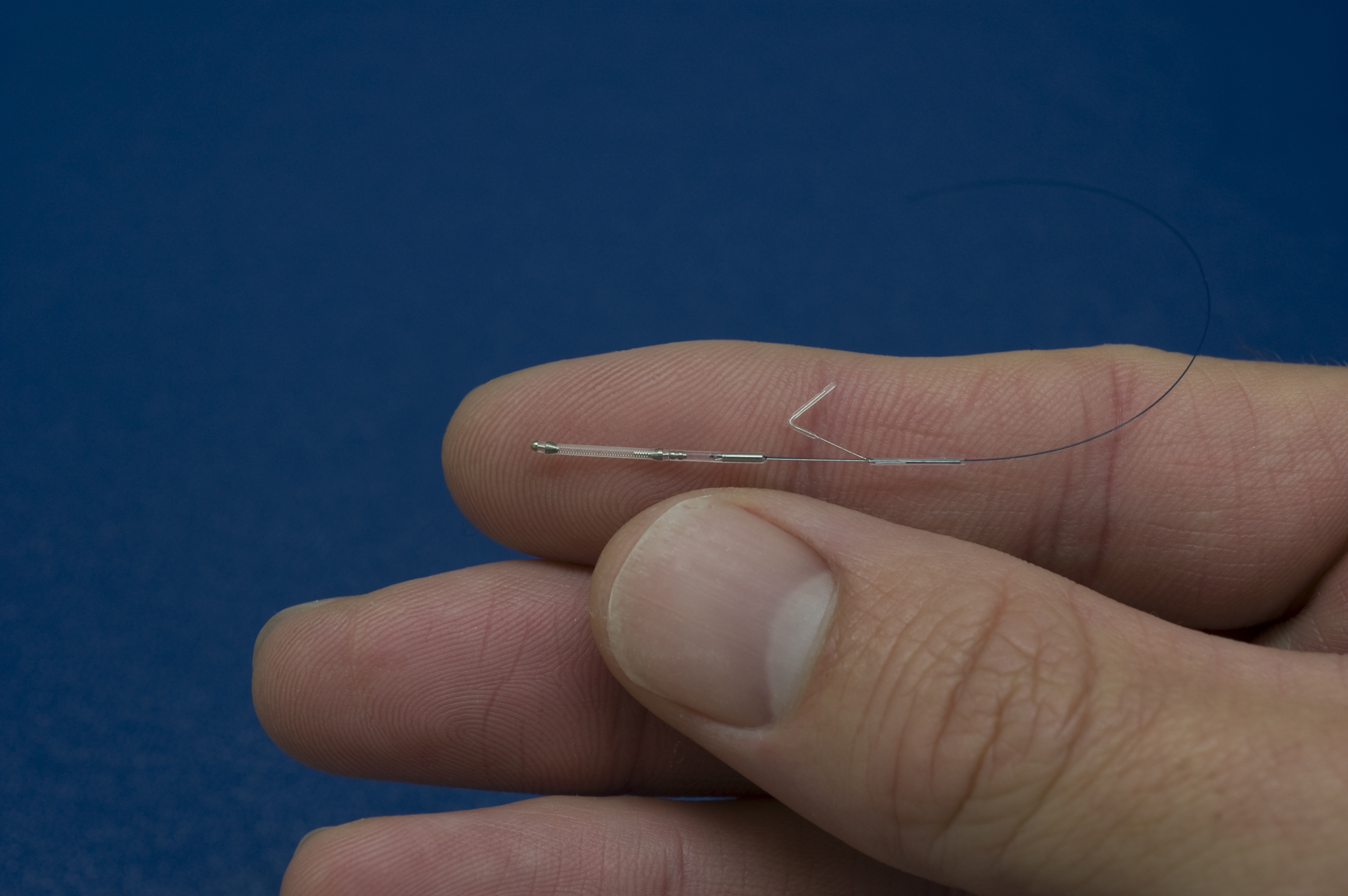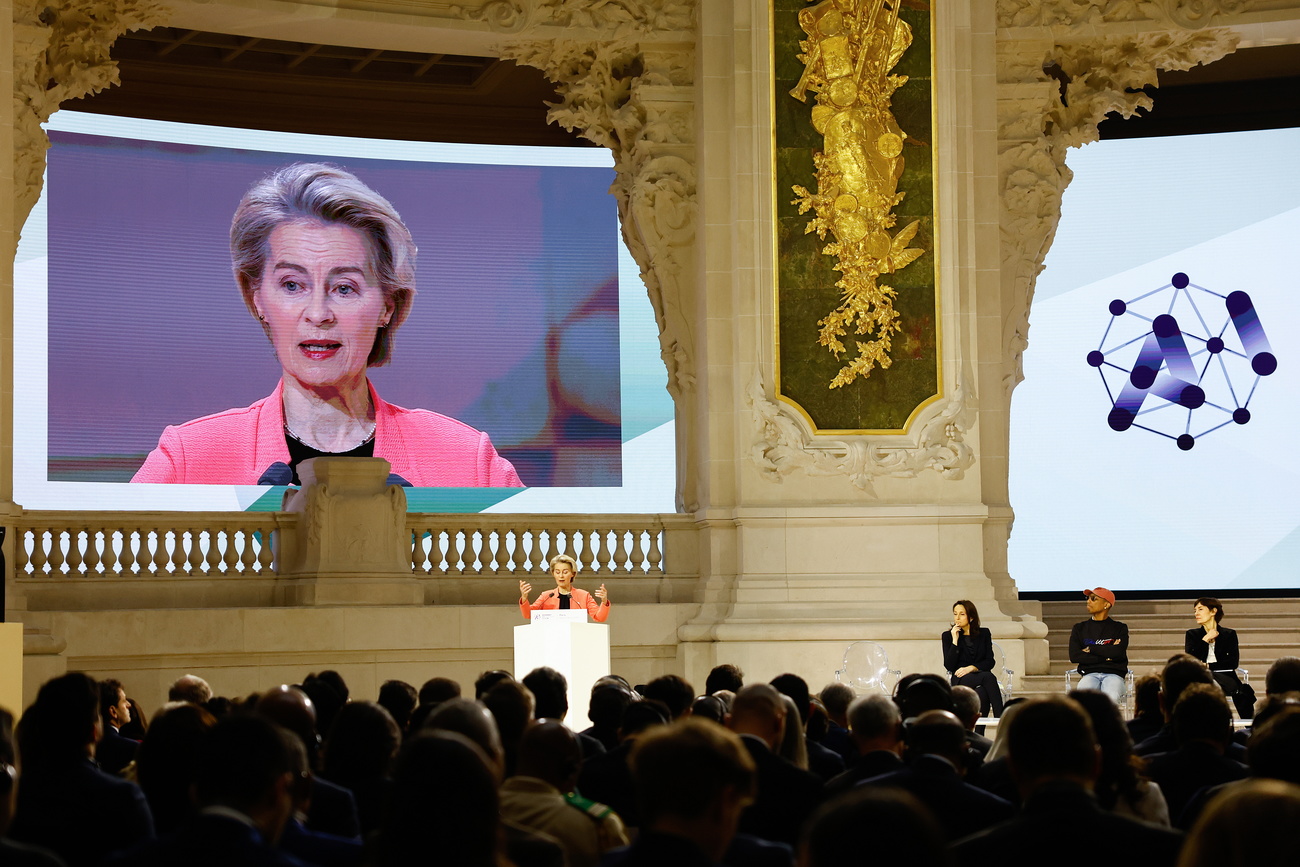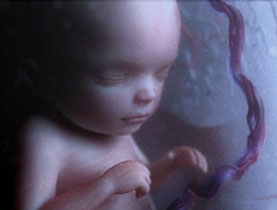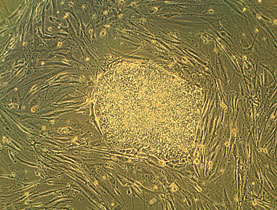First in vivo baby sees light of day

Swiss researchers have announced the first-ever birth of a baby via assisted in vivo fertilisation followed by full development inside the mother’s womb.
They hope their new “more natural” assisted reproduction technique will help young couples struggling with the growing infertility “epidemic” – one out of six couples in Switzerland.
“It’s a world first,” declared medical specialist Pascal Mock, the inventor of the new technology.
“This is the first time a baby has been born after in vivo fertilisation and that no incubators have been used. Instead, a device was placed in the uterine cavity of the mother.”
Under ongoing clinical trials a healthy baby boy was born in Geneva on October 30 following this in vivo method. A girl is expected for February next year in Geneva and two other babies are due in Lausanne.
Current IVF processes involve retrieving egg cells from a woman’s ovaries and fertilizing them in vitro, outside the womb, in a laboratory test tube. This is normally followed by a two-to-five day incubation period, after which the embryos are transferred into the mother’ uterus.
In the new technique, developed by the Lausanne-based start-up firm Anecova, eggs and sperm also meet in a test tube. But two hours after fertilisation, the gametes are placed in a tiny cylindrical silicone device, which is inserted into the mother’s womb.
Eighteen hours after this initial intervention, the couple returns for a check up. The device is removed and the embryos quickly analysed. Two or three zygotes are reintroduced into the mother straight away and the remainder are kept in deep freeze.
More natural
For Mock this new approach is more natural and less stressful: “The embryo has had very little contact with the environment and is less influenced by temperature, pressure and light.”
The early embryos start life in close contact with the mother, recreating the two-way exchange of fluids during the early stages of its development.
Early feedback from the “emotional” couples that have taken part in the tests has been “extraordinary”, said Mock, who works at the Grangettes clinic in Geneva.
“They give their eggs and sperm, and two hours later the couple leaves with the embryos inside the uterus. There’s greater dignity and psycho-emotional involvement from the couple,” he said.
“They feel less assisted, left on their own or out of touch with their bodies.”
Measuring just ten millimetres long by one millimetre in diameter, the tiny tube is perforated with almost 300 mini apertures to facilitate communication between the embryo and the womb.
The device was developed in collaboration with Lausanne’s Federal Institute of Technology.
Studies
According to a preliminary study carried out in Belgium, published in the medical journal Human Reproduction in March 2009, the new method provides a higher quality of embryo than the standard in vitro procedure.
“This more natural approach could become the standard treatment of choice if these results are confirmed,” said Marc Germond, doctor at the Centre of Medically Assisted Procreation, Lausanne, a leading Swiss IVF centre.
The clinical trials, which are being carried out for Anecova on 50 patients in five centres in Europe, are expected in May-June 2010.
“The idea is very good but presently there is no increase in the pregnancy rate,” Lausanne gynaecologist Alexandre Megalo told Le Temps newspaper.
Anecova has already received the green light from the relevant European health authorities, but it plans to continue testing and will start marketing the product at the end of next year, said director Martin Velasco.
Infertility epidemic
More and more Swiss couples are currently seeking artificial or partially artificial assistance to bear children. It is estimated that one in six couples suffers from fertility problems.
Globally, around one million in vitro fertilisation procedures take place every year. According to the Federal Statistics Office, around 5,400 Swiss couples in 2007 made use of one form or another of assisted reproductive technology – a 13 per cent rise on 2006.
Under traditional IVF techniques, a couple needs between two and five cycles, each costing SFr10,000 ($9,620), with a 70 per cent success rate.
Mock described the growing infertility problem as an epidemic, caused by the age of the would-be mother, stressful modern life, pollution and poor nutrition.
Simon Bradley, swissinfo.ch
In 2008, around 6,000 couples underwent assisted reproductive technology (ART) treatment. This is 9% more than in 2007 and follows a general trend of an increase of those using ART.
Approximately 9,600 treatment cycles were started and the treatment resulted in pregnancy for more than a third of the women.
The most common reason for undergoing treatment is male infertility (49%), followed by infertility problems in both partners (24%) and in the woman (16%). In 9% of cases no reason for infertility was found.
The average age of a woman for a first treatment is 35.9 years old. The partner was on average 39.1 years old. Almost one quarter of the women undergoing procedures in Switzerland are domiciled abroad.
Number of children per woman in Switzerland (2006): 1.44 (1964: 2.7)
Currently foreign women have more children: 1.9 per woman vs. 1.3 children per Swiss woman
Mean age of childbirth (in years): 30.4
The birth rate went up slightly during 2007 by 1.1% to 74,500

In compliance with the JTI standards
More: SWI swissinfo.ch certified by the Journalism Trust Initiative












You can find an overview of ongoing debates with our journalists here . Please join us!
If you want to start a conversation about a topic raised in this article or want to report factual errors, email us at english@swissinfo.ch.